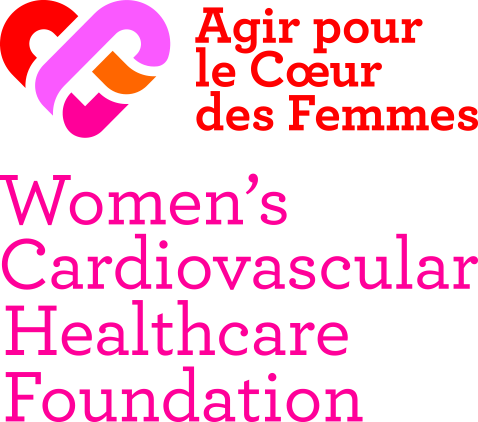
ANTICIPER
Gynecology
Aortic Dissection in Pregnancy: A Rare But Often Fatal Complication
Aortic dissection is a rare, but extremely serious event that requires urgent surgical intervention. For women, the majority of dissections occur before the age of 40 during pregnancy or postpartum.
Warning signs include the sudden appearance of chest pain or a neurological deficit.
Prevention relies on echocardiography screening in case of a history of aortic aneurysm, elastic tissue disease (Marfan syndrome) or a sudden death in the family. It can also involve preventive surgery in case of aortic dilatation, screening for gestational hypertension, and treatment with beta blockers in certain cases.

This is a rare event (1 in 100,000 pregnancies) but it is very serious and requires urgent treatment.
Pregnancy contributes to this condition due to hormone impregnation that increases tissue distention, especially in the artery wall elastic fibers.
The majority of dissections occur during pregnancy or early in the postpartum period. The rate of aorta dissection among women under the age of 40 is 25 times higher than among the general population.
The main warning sign is the appearance of intense chest pain that traditionally radiates into the back and is often accompanied by feelings of pressure. Other warning signs are neurological (difficulty moving an arm or leg, talking, seeing, etc.) in case of cerebral complications. It’s essential to call 911 if any of these symptoms appear.
This condition requires urgent treatment that involves emergency C-section under general anesthesia and emergency aorta repair surgery. Sometimes the aortic valve that controls the flow of blood out of the heart must be replaced at the same time. This is a long and very complex surgery with a risk of serious cardiac and neurological side effects, along with a 25% risk of death for the mother and her baby.
Aortic dissection often occurs when there is a personal or family history of aortic aneurysm, elastic tissue disease (such as Marfan, Ehlers-Danlos type IV, Loeys Dietz and other syndromes), Turner’s syndrome, or a bicuspid aortic valve (aortic valve disease). It is more likely in cases of high blood pressure, diabetes, tobacco use, preeclampsia and multiple pregnancies.
Aortic dissection can be prevented by screening when there is a family history of aortic aneurysm, elastic tissue disease or sudden death. Screening includes cardiac and aorta ultrasound, as well as potentially cross-sectional imaging (scanner or MRI) if the patient is planning for pregnancy. In order to avoid serious complications during pregnancy, preventive surgery may be recommended for young women whose aorta is too large (45 mm for those with Marfan syndrome and more than 50 mm for other patients). This intervention is completed earlier if there is a family history of acute aortic events or rapid progression. Protective beta-blocker therapy is indicated for women with elastopathies who are already pregnant.
Measures to prevent aortic dissection also include screening for and treating gestational hypertension, gestational diabetes and preeclampsia. Ultrasound and blood pressure monitoring is done monthly starting in the second trimester. Treatment is indicated when blood pressure is >140/90 mmHg. Screening for diabetes is done by testing fasting blood glucose, urine glucose, and oral glucose tolerance between 24 and 28 weeks of amenorrhea if there are risk factors. Screening methods for preeclampsia include monitoring for high blood pressure, protein in the urine and edema in the lower limbs, as well as monitoring the baby’s size and placenta arteries by Doppler ultrasound in the third trimester.
A C-section may be scheduled based on the size of the aorta, especially if there is a rapid increase in its size during pregnancy, to avoid the risk of dissection and complications for the mother and her baby.
ALERT, ANTICIPATE AND ACT to support women in order to prevent aortic dissection during pregnancy: At Women’s Cardiovascular Healthcare Foundation, one of our goals is to inform pregnant women that they should consult a cardiologist if they have a personal or family history of aortic or elastic tissue disease, and to call 911 if they experience chest pain or neurological symptoms.
REFERENCES
- 2018 ESC Guidelines for the management of cardiovascular diseases during pregnancy. Regitz-Zagrosek V, Roos-Hesselink JW, Bauersachs J, Blomström-Lundqvist C, Cífková R, De Bonis M, Iung B, Johnson MR, Kintscher U, Kranke P, Lang IM, Morais J, Pieper PG, Presbitero P, Price S, Rosano GMC, Seeland U, Simoncini T, Swan L, Warnes CA; ESC Scientific Document Group. Eur Heart J. 2018 Sep 7;39(34):3165-3241
- Pregnancy-associated arterial dissections: a nationwide cohort study. Beyer SE, Dicks AB, Shainker SA, Feinberg L, Schermerhorn ML, Secemsky EA, Carroll BJ. Eur Heart J. 2020 Nov 21;41(44):4234-4242.
- Pregnancy and the Risk of Aortic Dissection or Rupture: A Cohort-Crossover Analysis. Kamel H, Roman MJ, Pitcher A, Devereux RB. Circulation. 2016 Aug 16;134(7):527-33.
SEE ALSO
How to Eat Well to Live Well
Nutrition
It’s best to eat more foods that are good for our health like fruits, vegetables, while grains, dairy products and fish. And we should limit consumption of sugary products (like pastries, sweets, and sugary drinks), salty products (like prepared foods, chips and crackers) and fatty foods (like deli [...]
Why Tobacco is a Young Woman’s No. 1 Nemesis
Tobacco
Tobacco is the most alarming avoidable risk factor because it’s responsible for the earliest cardiovascular events in women. At any age, for the same rate of tobacco use, the risk of heart attacks is 25% higher for women than men. Tobacco is harmful for the heart and arteries, no matter how much is [...]
Why Women are More Exposed to Cardiovascular Risk Factors
Risk Factors
Certain risk factors are linked to higher risk of cardiovascular disease and a poorer prognosis for women than men. At the same age, women have more cardiovascular risk factors than men. More than 80% of women over 45 have at least two. Their risk of heart attack linked to hypertension, diabetes or a [...]




